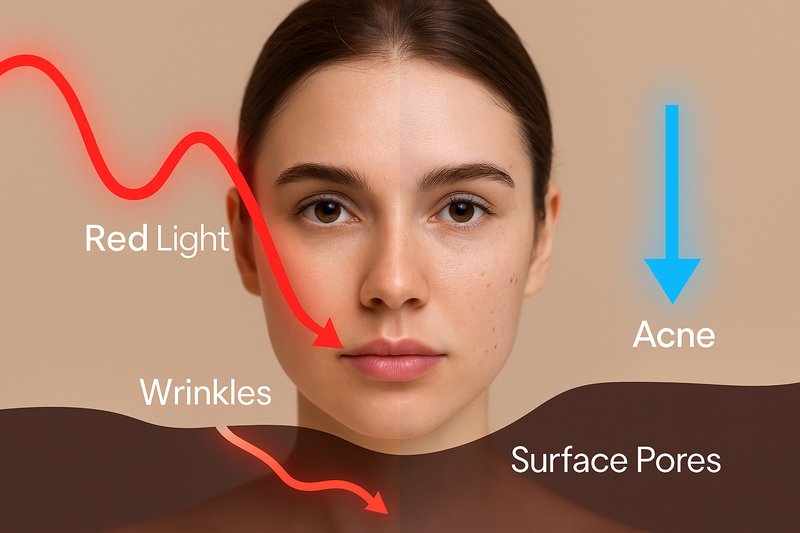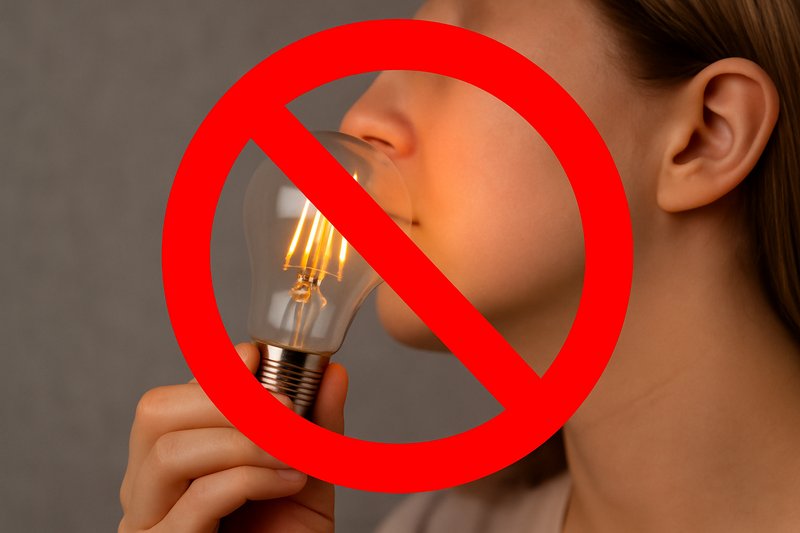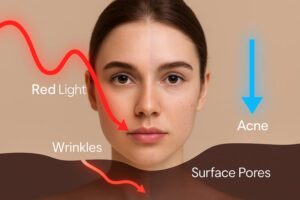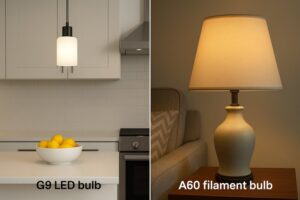You see the massive demand for wellness products, but it is hard to find a new category with real science behind it. This makes it risky to invest your resources in what might just be the next passing fad.
Yes, specific wavelengths of LED light can promote healing and rejuvenation in a process called phototherapy or light therapy. Red light boosts collagen production, while blue light kills acne-causing bacteria, offering a non-invasive way to stimulate natural cellular repair.

This emerging field fascinates me because it showcases the incredible potential of the technology we work with every day at Omita. I was recently talking to a product manager for a major US-based beauty brand. She was looking for a new product that felt innovative and effective. "Wallson," she said, "our customers are smart. They want results they can see, backed by science." I explained that the same principles that allow us to create a high-quality, stable, and color-accurate G9 bulb are foundational to the technology used in these advanced skincare devices. It's all about controlling light. This conversation opened her eyes to a whole new category of products that bridge the gap between cosmetics and medical treatment.
How Can Light Waves Possibly Interact With Our Cells?
The claim that light can heal the body sounds like science fiction. Without understanding the basic mechanism, it feels impossible to trust the technology or explain its benefits to your own customers.
Light energy is absorbed by mitochondria, the "powerhouses" inside our cells. This boosts the production of ATP (cellular fuel), which powers cell repair, regeneration, and reduces inflammation. Different colors of light penetrate to different depths to trigger specific results.

Think of it as photosynthesis for your skin. Just as plants use sunlight to create energy, our bodies can use specific wavelengths of light to kickstart important biological processes. The key component is the mitochondrion. When these tiny cellular engines absorb light photons of a particular color, they work more efficiently and produce more Adenosine Triphosphate (ATP). ATP is the energy currency of life; every single process in your body, from muscle contraction to wound healing, requires it. By giving cells an energy boost with light, you enable them to repair themselves, build new proteins like collagen, and fight off inflammation much more effectively. This isn't a mystical process; it's a well-documented biochemical reaction. The "magic" is simply knowing which color (wavelength) of light to use to target a specific type of cell or achieve a particular outcome, which is a core principle we understand deeply from decades of manufacturing precise lighting.
Red vs. Blue Light Therapy: What's the Difference?
You hear about different "colors" of therapy, like red and blue light. They seem interchangeable in conversation, making it hard to understand how to apply them or which one is right for a specific problem.
Red light therapy (around 630-660nm) is primarily for anti-aging and healing; it penetrates deep to stimulate collagen. Blue light therapy (around 415-450nm) is for acne, staying near the skin's surface to kill bacteria in pores.

The color of the light is simply how our eyes perceive its wavelength, and that wavelength determines how deeply it can penetrate the skin and what it interacts with. As a manufacturer of LEDs, we're obsessed with precise wavelengths, whether it's for creating a perfect 2700K warm white or for a more specialized application. For therapy, this precision is even more critical. Red light has a longer wavelength, allowing it to bypass the outer layers of the skin and reach the fibroblasts in the dermis. These are the cells responsible for creating collagen and elastin, the proteins that keep skin firm and youthful. In contrast, blue light has a much shorter wavelength and is absorbed at the surface. Its primary benefit is antimicrobial; it specifically targets and destroys P. acnes, the bacteria that is a primary cause of acne breakouts.
A Quick Guide to Light Therapy Colors
| Wavelength / Color | Penetration Depth | Primary Target | Key Benefits | Best For |
|---|---|---|---|---|
| Blue Light (~415nm)1 | Shallow | P. acnes bacteria | Kills bacteria, reduces oil production, calms breakouts. | Mild to moderate acne. |
| Red Light (~660nm)2 | Deep | Fibroblasts, Mitochondria | Stimulates collagen, reduces inflammation, improves circulation, speeds healing. | Fine lines, wrinkles, wound healing. |
| Near-Infrared (~850nm) | Deepest | Muscle tissue, joints | Reduces deep inflammation and pain, promotes tissue repair. | Muscle soreness, joint pain. |
Can You Use a Regular Omita Light Bulb for This?
You think, if Omita's LEDs are such high quality, maybe you can just use one of your lamps for therapy. This could be a way to test the benefits without buying a new, specialized device.
No. General lighting bulbs are designed to produce a broad spectrum of visible light to illuminate a room. They do not deliver the focused, single, high-intensity wavelength required for a therapeutic effect. Using them for therapy will not work.

This is the most critical point of clarification for my clients. As a responsible manufacturer, I must be very clear: our filament bulbs, G4s, and G9s are engineered for illumination, not irradiation. The difference is crucial. An Omita 2700K filament bulb creates beautiful warm white light by combining light from different colored LEDs (mostly red and yellow with a little blue) to produce a pleasant spectrum for the human eye. A therapeutic device uses LEDs that emit only a very narrow, precise wavelength, such as 660nm red light. Furthermore, phototherapy requires a specific dose of light energy, measured in mW/cm². This means delivering a high intensity of light to a small area. Our bulbs are designed to do the opposite: spread light out over a large area as efficiently as possible. Using one of our bulbs for therapy would be like trying to cook a steak with the heat from a single candle. The technology is related, but the application, intensity, and design are completely different.
What Does This Mean for the Future of Wellness Products?
You can see this is a growing trend with real science behind it. You're now wondering how you, as a product manager or business owner, can capitalize on this trend and what you should look for.
The market for at-home, FDA-cleared phototherapy devices like masks and wands is growing rapidly. Consumers want convenient, effective, non-invasive treatments. The key is to source safe devices from reputable manufacturers who use high-quality components.

The opportunity for your business is significant. The demand for at-home wellness solutions that were once only available in a dermatologist's office is exploding. This creates a new and profitable category for retailers and brands. However, this is not a market to enter lightly. Safety and efficacy are paramount. Just like when you are sourcing high-quality lighting, the reliability of the product comes down to the quality of the internal components. A good phototherapy device requires long-lasting LED chips that produce a consistent and accurate wavelength, powered by a stable driver that prevents any dangerous fluctuations. These are the same principles of quality and reliability that we at Omita have built our reputation on for 30 years. As you explore this market, look for partners who can demonstrate certification (like FDA-clearance) and who are transparent about the quality of their technology. It's a fantastic new frontier, built on the power of the simple LED.
Conclusion
LED phototherapy uses precise light wavelengths for proven health benefits, from skincare to deep tissue healing. This technology is creating a new wave of effective, science-backed wellness solutions.








